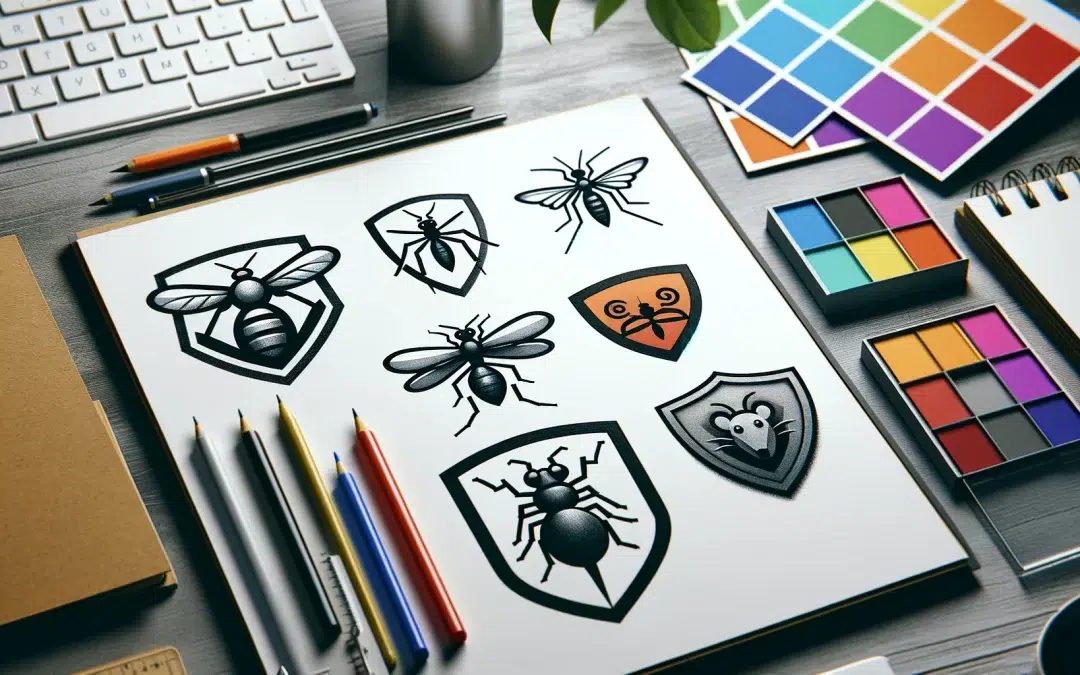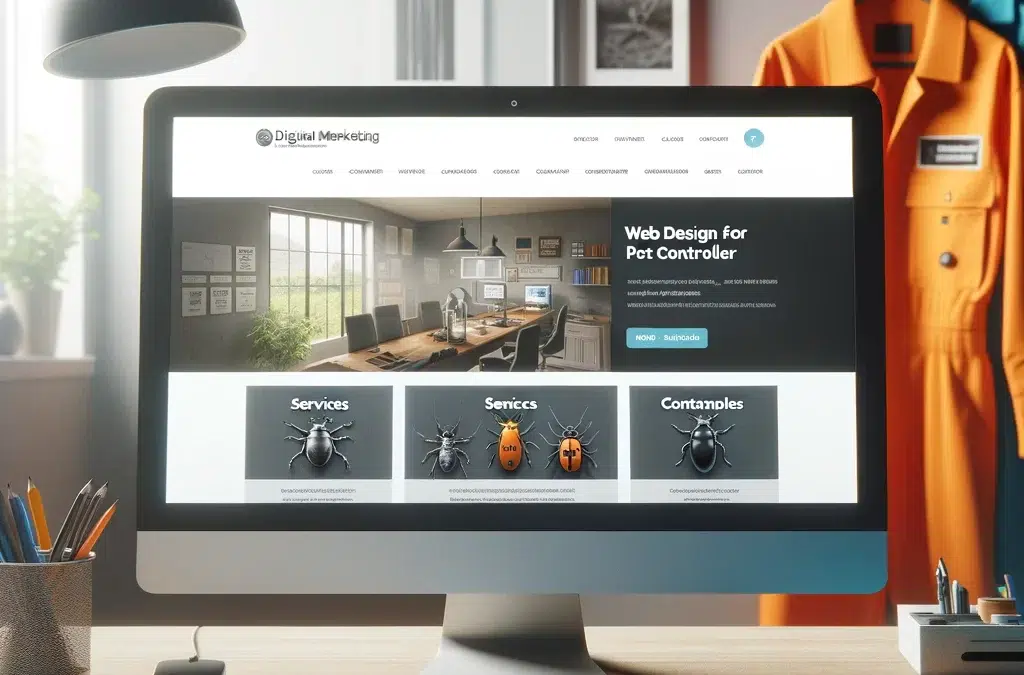Mastering Pest Control Branding for Market Success
Branding done well is like saying to a customer “Here, we want to make it easier for you to remember us, to get a good vibe from us” It’s the first step to customer service in many ways. It’s how you dress, present yourself, communciate. Good branding is in the detail, the consistency and it WILL set you apart from others.
Good branding will distinguish a company from its rivals, conveying professionalism, and building customer trust. A strong brand not only helps a business stand out with a unique identity but also reassures customers of the company’s reliability and expertise, especially important in a field that involves entering homes and managing pest-related issues.
By consistently presenting a professional image—from the logo and staff uniforms to vehicle designs and online presence—a well-crafted brand fosters customer loyalty, supports premium pricing, and establishes an emotional connection that encourages repeat business and referrals. Thus, investing in a robust brand identity is crucial for pest control businesses aiming to thrive and expand in a crowded market.
More than just a logo
When you’ve created a logo, you haven’t created your branding. You’ve simply taken a step int he branding journey. A logo often serves as the first point of contact between the pest control business and potential customers. It appears on all marketing materials, business cards, websites, uniforms, and service vehicles. A professional and memorable logo creates a positive first impression and sets the tone for customer expectations.
The logo is a quick visual representation of your brand. In pest control, where timely and effective service is critical, a logo that can be easily recognized helps customers remember and choose your service over competitors. It acts as a symbol that customers associate with reliability and trustworthiness when they need pest control solutions.
Tip #1 Ensure Your Branding Conveys Professionalism
In the pest control industry, where trust and professionalism are paramount due to the sensitive nature of the services, the quality of your logo can significantly impact customer perceptions. A sharp, well-designed logo acts like a professional handshake—it’s the first interaction customers have with your brand, and it sets the tone for the relationship.
A logo that’s blurry, pixelated, or of poor quality can negatively reflect on your business, suggesting a lack of professionalism and attention to detail. Just like you wouldn’t want to show up to a job in a disheveled uniform, your logo shouldn’t be a low-effort afterthought. Using outdated graphics like clip art can communicate that your business might be behind the times or not serious about investing in itself. Remember, your logo is an essential part of your business identity—akin to the face of your company.
Investing in your brand, including a professionally designed logo, doesn’t necessarily mean spending thousands of dollars. However, it does mean dedicating resources—be it time or money—to ensure your logo accurately represents the quality and professionalism of your services. Keep your logo design simple and recognizable. This simplicity makes it easier for customers to remember your brand, which is crucial for when they need your services urgently.
By keeping your logo design clean and professional, you’re not just building a brand; you’re building trust. Think of your logo as your business’s suit: it should be neat, professional, and appropriate for the job at hand.
4. Communicating Brand Values in branding
A logo can convey the essential ethos or specialty of a pest control business through its design elements. For instance, a logo could include elements that suggest eco-friendliness, such as green leaves, if the company uses environmentally safe practices. Alternatively, a more traditional, conservative font and color scheme can communicate stability and reliability.
5. Differentiation
In a competitive market, a distinctive logo helps a pest control business stand out. It differentiates the company from its competitors by highlighting unique features through the design, such as bespoke imagery or a unique color palette. This differentiation is crucial for brand recall and loyalty.
6. Emotional Connection
A logo can also play a vital role in building an emotional connection with the audience. For instance, a logo design that includes a friendly, cartoonish bug might make the company appear more approachable and less intimidating to homeowners who are distressed by pest problems. This emotional resonance can influence customer choice, especially in a service-based industry.
7. Consistency Across Touchpoints
A logo helps maintain consistency across various customer touchpoints, including digital and physical platforms. This consistent presence reinforces brand identity and helps build a cohesive image that customers learn to recognize and trust over time.
In summary, while a logo is just one part of a broader branding strategy, its impact in the pest control industry is significant. It not only aids in immediate recognition and differentiation but also plays a crucial role in building and maintaining trust, professionalism, and an emotional connection with the customer base. A thoughtfully designed logo is an investment in the business’s public face and reputation.
Mistakes To Not Make In Branding
Inconsistent Branding
Having some solid brand guidelines and understanding the intended message behind your branding will help avoid incosistent branding.
Inconsistency in logo, color schemes, messaging, or overall aesthetic across different platforms can confuse customers and dilute brand identity. It’s crucial to maintain uniformity in all visual and verbal communications, whether it’s on business cards, websites, vehicle wraps, or social media profiles.
Deep Dive into your Target Audience
Not understanding or addressing the specific needs and preferences of your target market can lead to ineffective branding. Pest control companies should tailor their branding to resonate with their particular demographic, considering factors like locality, typical pest problems, and customer values (e.g., eco-friendliness, fast service).
Overcomplicating the Logo
A complex logo can be difficult to reproduce and hard for customers to remember. It’s important to design a logo that is simple yet memorable, ensuring it is effective across various media, from tiny app icons to large billboards.
Neglecting Online Presence
In today’s digital age, customers often engage with brands online before making a decision. A poorly designed website, infrequent social media activity, or low search engine visibility can harm a brand’s credibility and ability to attract new customers.
Failing to Differentiate
If your branding too closely resembles that of competitors, it can make your business seem generic. Distinctive branding that sets you apart and highlights your unique selling propositions is essential for capturing attention and building a loyal customer base.
Not Evolving the Brand
Market conditions and customer preferences change over time, and brands need to adapt to remain relevant. Failing to update or refresh your brand can make your business appear outdated and out of touch with current market trends.
Overpromising and Underdelivering
If your branding promises more than your business can deliver, it can lead to customer dissatisfaction and damage your reputation. Ensure your brand’s messaging is honest and reflective of the actual services and customer experience you provide.
Lack of Emotional Connection
Branding that doesn’t evoke any emotional response or fail to establish a personal connection with customers is less likely to be memorable. Effective branding should tell a story or convey messages that resonate emotionally with potential customers.
9. Neglecting Feedback
Not listening to customer feedback on your branding and services can result in missed opportunities for improvement and engagement. Regularly soliciting and incorporating feedback can help refine your branding to better meet customer needs.
10. Poorly Managed Rebranding
Rebranding can be necessary and beneficial, but if poorly managed, it can confuse customers and erode trust. Any changes to your brand should be strategic, well-planned, and communicated transparently to your current customers.
Avoiding these common mistakes can help ensure that your pest control company’s branding effectively supports your business goals, enhances your market presence, and builds a strong, lasting connection with your customers.
Branding and Logo design for Pest Control
As a top branding and logo designer specializing in the pest control industry, I’ve seen first hand how powerful and transformative effective branding can be for businesses in this field. Branding is much more than just a logo or a set of colors; it’s the entire identity of your business and plays a crucial role in building recognition, trust, and loyalty among customers.
Building Recognition
In the pest control industry, where urgent needs and immediate recognition are crucial, a strong brand makes your business the first that comes to mind in a time of need. An effectively designed logo acts as the face of your company, making it instantly recognizable. This visual identity extends to all your marketing materials, vehicles, uniforms, and more, creating a consistent and memorable image that stands out in the crowded marketplace. Consistent use of specific design elements and colors helps cement your business in the minds of consumers, who often make quick decisions based on visual impact.
Establishing Trust
Trust is paramount in pest control, as customers invite you into their homes and trust you to handle potentially hazardous situations. A professional and cohesive brand conveys reliability and expertise, assuring customers of the quality and safety of your services. Your branding communicates not just what you do, but how well you do it, and what ethical and safety standards you uphold. Trust is also built through testimonials and real-world stories, which should be a part of your brand’s narrative, showcased across your marketing platforms.
Fostering Customer Loyalty
Effective branding extends beyond the first job completed—it’s about creating lasting relationships. A strong brand fosters an emotional connection, making customers feel cared for and respected, which is incredibly important in a service-based industry like pest control. Loyalty programs, consistent follow-up communications, and branded customer experiences reinforce this connection, encouraging repeat business and referrals. Loyalty is not just about recognizing a logo; it’s about consistently delivering on brand promises, which cultivates an ongoing relationship.
Differentiating from Competitors
The pest control market is competitive, with many companies vying for attention. A well-crafted brand differentiates your business by highlighting what makes you unique. Maybe it’s your commitment to eco-friendly products, your innovative methods, or your unbeatable customer service. Effective branding articulates these unique selling propositions clearly, making it easy for customers to understand why they should choose you over others. In marketing materials, how your brand is portrayed can significantly impact perception and influence the decision-making process.
How to Execute Effective Branding
To ensure your branding is effective, start with a deep understanding of your target market and what they value most. Develop a logo and visual identity that reflects these values and stands out for its clarity and professionalism. Invest in high-quality materials and ensure every customer touchpoint reflects your brand standards, from your website to your service teams. Utilize storytelling in your marketing to connect emotionally with customers, and make sure your unique selling points are front and center.
In summary, as the leading pest control branding expert, I emphasize that robust and thoughtful branding is crucial. It not only elevates your business above the competitive noise but also builds a trustworthy reputation that encourages customer loyalty. For pest control companies looking to thrive, investing in professional branding is not just beneficial; it’s essential.
DigiXCentric

We’re Bec and Jamie, your go-to digital marketing duo! With years of experience in graphic and web design, we specialise in helping businesses like yours grow and thrive. Whether you need marketing support, design solutions, or a fresh approach, we’re here to bring your ideas to life with a personal touch.
Further Reading…..

A Guide To Pest Control Logo Design
A Guide To Pest Control Logo DesignCreating a strong brand identity in the pest control industry involves more than just offering excellent service; it requires building trust and recognition among customers. A professional logo serves as the foundation of this...
More on Pest Control…..

A Guide To Pest Control Logo Design
A Guide To Pest Control Logo DesignCreating a strong brand identity in the pest control industry involves more than just offering excellent service; it requires building trust and recognition among customers. A professional logo serves as the foundation of this...

Pest Control Website Design
The Ultimate Guide To Pest Control Website DesignAs a pest controller, having a strong online presence is crucial for attracting and retaining clients. Your website serves as the digital face of your business, showcasing your expertise, building trust, and driving new...
